Mexico is home to a host of archaeological sites. There are so many that have been named World Heritage Sites by UNESCO because of what they can offer in terms of history and archeology.
Mexico, after all, was home to various civilizations who have left their indelible mark upon the country, gifting it with a legacy of architectural wonders, a wealth of culture and art, secret and mysteries that are yet to be discovered. Below you'll find just SOME of the archaeological sites you can visit when in Mexico. There are more. You can drink it all and discover the wonder of history and archeology that Mexico has to offer.
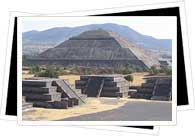
Close to the modern civilization, yet ages apart. Teotihuacan is but a few miles from Mexico City and is perhaps one of the world's most important archaeological sites. Teotihuacan was revered place for the Aztecs. Its name, Teotihuacan, means “the place where men become gods.”
You can feel the splendor of its past as you walk along the Avenue of the Dead (Calzada de los Muertos) and as you explore the majestic pyramids. The Pyramid of the Sun (Piramida del Sol) is the third largest pyramid in the world. The view from the top is simply amazing. The Pyramid of the Moon (Piramida de la Luna) is a smaller version, but it is built on higher ground. The site is quite huge, with plazas, palaces and courtyards you can explore. Be sure to check out the Palace of the Quetzal-Butterfly, the murals in the Palace of the Jaguars and the sculptures of the Quetzalcoatl temple.
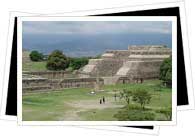
Just outside the city of Oaxaca, you can find the spending archaeological site of Monte Alban. Nestled in two valleys is the ruins of what was once the capital of ancient “White Mountain,” (which is what Monte Alban means). It overlooks the valleys of Oaxaca, as it is built upon a leveled mountain top.
Monte Alban is the Zapotecs' capital city for the region and it rose to become the most important city there. There is a large plaza, where you can begin exploring the surrounding structures. There is the Games Court (Juego Pelota), where the court is shaped like an I with sloping sides. There is also the North Platform (Plataforma Norte), which offer great views of the valley. Then there is the Monument of the Dancers (Monumento de los Danzantes), with its intriguing carvings; the Palace (El Palacio) and the South Platform (Plataforma Sur).
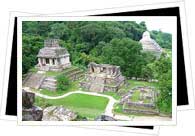
The ancient city of Palenque is quite spectacular – lush tropical jungle encapsulates this city and gives it a mystic that will leave you breathless and in awe. This is where you rulers and leaders of the ancient times were entombed. Even until today, there are excavations that aim to uncover more of its secrets.
Take your time as you wander fom building to building, it surely is worth it. First stop is the Temple of Inscriptions (Templo de las Inscripciones), then on to the Temple of the Skulls and Templo XIII. These are actually burial temples. The Palace will lead you to a labyrinth of corridors and courtyards. Then there are other buildings you should go see: the Temple of the Jaguar, the Temple of the Sun, Templo VIX, the Temple of the Corss and the Temple of the Foliated Cross.
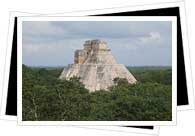
“Oosh-MAHL” is to be found in the Yucatan Peninsula. This used to be a city of great significance and is currently a delightful place to visit. Ancient pyramids and temples are surrounded by a lush green forest. It is one of the most popular of the Mayan cities, and is, without a doubt, one of the finest. The Pyramid of the Magician (Piramide del Adivino) is quite a steep climb but well worth it. The top provides you with a panoramic view of the entire ancient city. Then there is the Nun's Quadrangle (Cuadrangulo de las Monjas), the Governor's Palace, the Games Court, and the House of the Turtles. The stone carvings to be found in the city are simply striking and unforgettable.
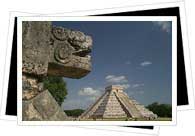
Extensively restored, this site is laid out as a gigantic calendar. The site is a treasure trove of archaeological finds. First stop is the Castle (also known as the Pyramid of Kukulcan). Here, during the spring or autumn equinox, people gather to watch the shadow of the serpent move over the pyramid. Ancient astronomers were able to position the pyramid in such a way that the play of sunlight and shadow seems like a snake's body gliding over the pyramid. There is also the Temple of the Jaguars, the Temple of the Skulls and the Main Ball Court. On the Temple of the Jaguars, get inspired by the carvings of jaguars and rattlesnakes. The main ball court, there are eight, is the largest in all of Mexico's archaeological sites. El Caracol (The Snail) observatory is just one proof of the Mayan obsession about astronomy and time
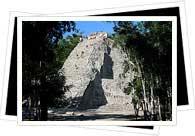
This is one of the Mayan's largest cities. Again, as in other ancient sites, Coba is situated in a lush forest and it owes much of its mystic to this fact. Coba is really a labyrinth of roads and walkways with structures along the way. Grupo Coba is one of its major attractions. Make your way to the top and you will see great views of the ancient city and its surroundings. The way to the top is just as interesting, with butterflies, insects and birds accompanying you along the way. There is also the Great Pyramid of Coba, Nohoc Mul. Standing 136 feet in height, this is the tallest pyramid in the southeastern peninsula of Mexico. Then, there is also the Temple of the Paintings (Conjunto Las Picturas) where some murals can still be visible in the four-tiered pyramid.